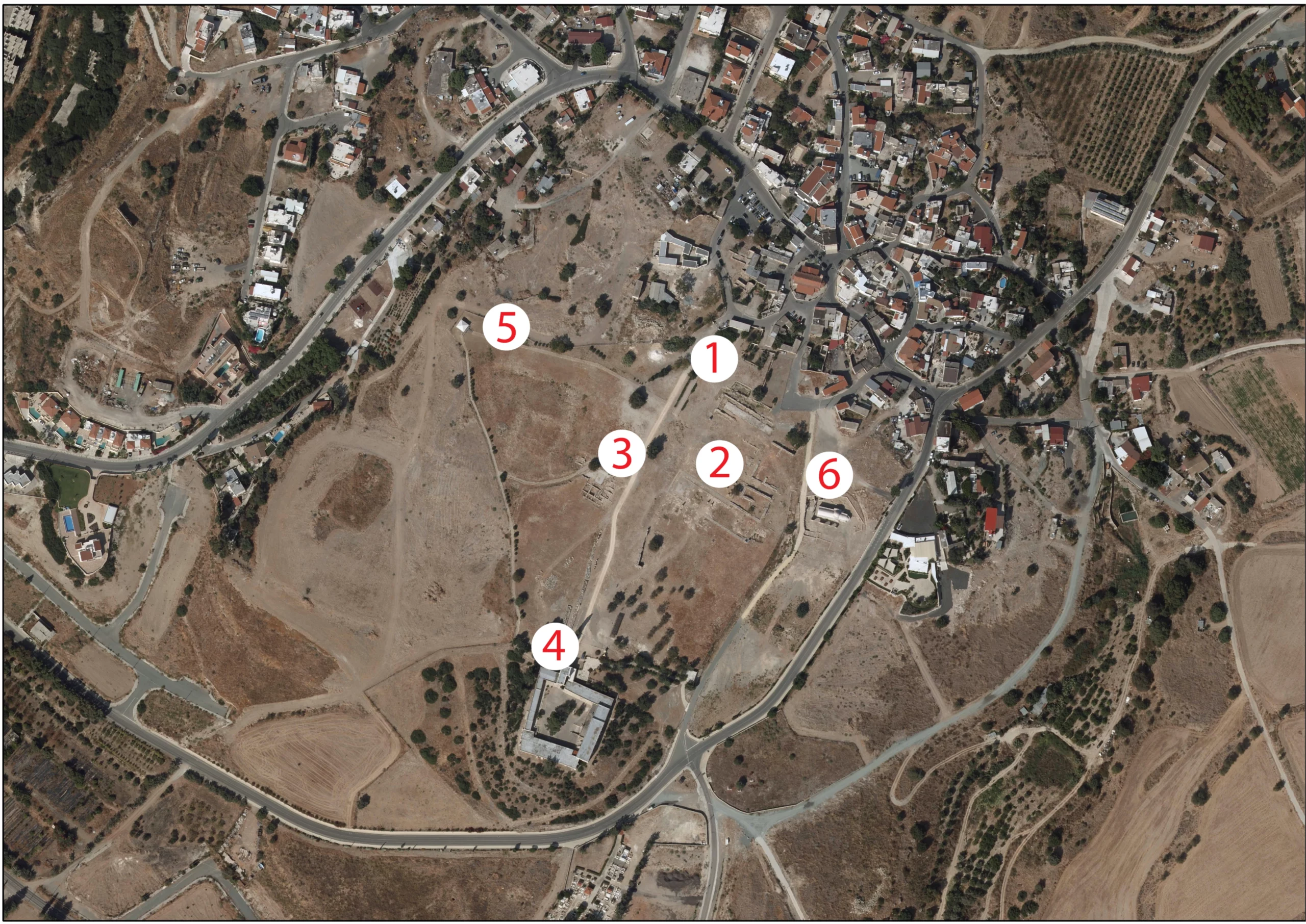DESCRIPTION:
Palaepaphos was one of the wealthiest sites on the island. The site is closely linked to the ancient cult of the Cyprian Goddess, who was later identified with Aphrodite.
The site's first occupation dates back to the Late Bronze Age (approx. 1600 BC) when Palaepaphos flourished, as evidenced by the abundance of artifacts found in burial assemblages. The rich offerings in gold, copper, and ivory reflect the inhabitants' wealth and their active trade with cultures from both the West and the East.
In the 7th century BC, the city-kingdom of Paphos is mentioned for the first time in an Assyrian inscription (the Esarhaddon Prism), and the first historically recorded king of Paphos was Etewandros. The kings of Paphos held both political and religious role, bearing the title "Basileis (kings) of Paphos and Iereis (priests) of the Wanassa."
Palaepaphos was the capital of the city-kingdom of Paphos until 300–320 BC, when its last king, Nikokles, established a new administrative and economic centre in Nea Paphos. From there on, Nea Paphos became the capital centre, while Palaepaphos retained its significance due to the cult of Aphrodite. In 284 BC, the island came under Ptolemaic rule, and Palaepaphos transitioned from an urban to a religious centre.
During the Roman period, Palaepaphos underwent numerous reconstructions, with its mosaic floors reflecting a period of prosperity. It remained an important religious centre and also served as the control centre for minting bronze coins on the island. However, in the 4th century AD, the spread of Christianity led to the termination of religious and cultural activities at the sanctuary, marking the city's first decline in its long history.
In the 12th century AD, Palaepaphos revives into the administrative centre of the region, overseeing the sugar production introduced by the Lusignans on the island. By 1571, the village of Kouklia was one of the administrative districts of the Baf (Paphos) province. However, by the early 19th century, the village had visibly declined.
The site's significance as an administrative and religious centre was brought back into focus through archaeological excavations. In 1980, Palaepaphos was recognized for its historical importance and included in the UNESCO World Heritage Sites list.
